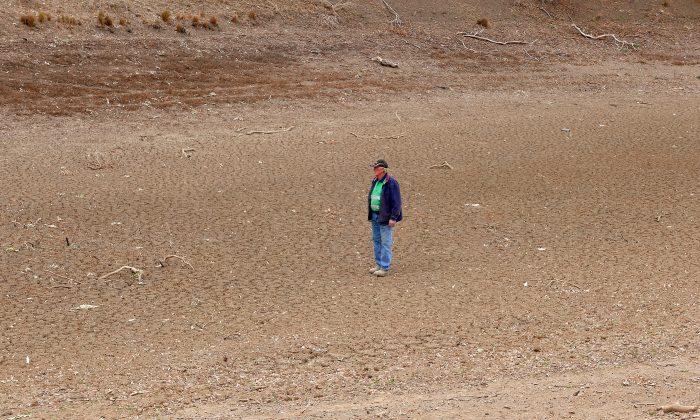SYDNEY—Australia’s east coast will experience dry weather for at least the next three months, the country’s meteorological bureau said on Aug. 30, intensifying a drought that has wilted crops and left farmers struggling to stay in business.
In its latest three-month outlook, the Bureau of Meteorology said there was only a 30 percent chance rainfall would exceed average levels over much of the country’s east coast during spring, which runs from September to November.
If the drought gets worse, Australia’s agricultural sector will suffer further crop losses, while farmers will also be forced to slaughter livestock in greater numbers as they struggle to find enough food or water to keep them alive.
The bureau also raised the prospect of dry weather in the country’s west, which has so far escaped drought conditions, bringing new concerns for Australian food manufacturers.
Unable to source enough grain from the east coast, some food producers have started to import supplies from Western Australia, where recent favorable weather had encouraged farmers to sell leftover supplies.
But the bureau said the west coast—the country’s largest agricultural producing region—will also experience drier than average weather over the next three months, tightening national supply yet further.
“East coast farmers have largely written off wheat crops this year, but the issue could be the situation in the west,” said Phin Ziebell, agribusiness economist, National Australia Bank.
“Some had been calling for a crop in excess of 10 million tonnes (in Western Australia), but if the forecast materializes, the figure will be under threat.”
Production of wheat from the world’s fourth-largest exporter is already expected to hit a decade low this year, although output from the west is expected to cushion the decline in the east.
The bureau also said it saw a 50 percent chance of an El Nino weather event, which can bring warmer weather and dry conditions to Australia and could extend the dry weather into 2019.
“An El Nino basically means that as we get into summer there'd be less chance of having those recovery rains that we need and we may have to wait till autumn in 2019 to start seeing some recovery rains in the drought areas,” said Andrew Watkins, manager of long range forecasts at the Bureau of Meteorology.






Friends Read Free